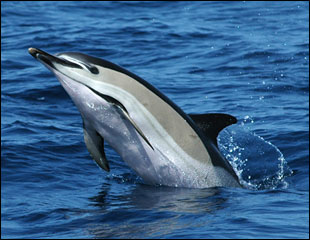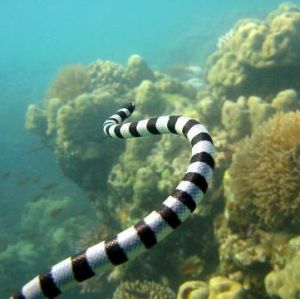Source:- Google.com.pk
Sea Animals Pictures Biography
A salp (plural salps) or salpa (plural salpae or salpas[1]) is a barrel-shaped, planktonic tunicate. It moves by contracting, thus pumping water through its gelatinous body. The salp strains the pumped water through its internal feeding filters, feeding on phytoplankton.
Contents [hide]
1 Distribution
2 Life history
3 Oceanographic importance
4 Nervous systems and relationships to other animals
5 Classification
6 Bibliography
7 References
8 External links
[edit]Distribution
Salps are common in equatorial, temperate, and cold seas, where they can be seen at the surface, singly or in long, stringy colonies. The most abundant concentrations of salps are in the Southern Ocean (near Antarctica). Here they sometimes form enormous swarms, often in deep water, and are sometimes even more abundant than krill.[2] Since 1910, while krill populations in the Southern Ocean have declined, salp populations appear to be increasing.
[edit]Life history
Salps have a complex life cycle, with an obligatory alternation of generations. Both portions of the life cycle exist together in the seas—they look quite different, but both are mostly transparent, tubular, gelatinous animals that are typically between 1 and 10 cm (0.39 and 3.9 in) tall. The solitary life history phase, also known as an oozoid, is a single barrel-shaped animal that reproduces asexually by producing a chain of tens to hundreds of individuals, which are released from the parent at a small size. The chain of salps is the aggregate portion of the life cycle. The aggregate individuals are also known as blastozooids; they remain attached together while swimming and feeding, and each individual grows in size. Each blastozooid in the chain reproduces sexually (the blastozooids are sequential hermaphrodites, first maturing as females, and are fertilized by male gametes produced by older chains), with a growing embryo oozoid attached to the body wall of the parent. The growing oozoids are eventually released from the parent blastozooids, and then continue to feed and grow as the solitary asexual phase, thus closing the life cycle of salps.
The alternation of generations allows for a fast generation time, with both solitary individuals and aggregate chains living and feeding together in the sea. When phytoplankton is abundant, this rapid reproduction leads to fairly short-lived blooms of salps, which eventually filter out most of the phytoplankton. The bloom ends when there is no longer enough food to sustain the enormous population of salps.
[edit]Oceanographic importance
Pegea confederata on a 1995 stamp from Azerbaijan.
One reason for the success of salps is how they respond to phytoplankton blooms. When there is plenty of food, salps can quickly bud off clones, which graze the phytoplankton and can grow at a rate which is probably faster than any other multicellular animal, quickly stripping the phytoplankton from the sea. But if the phytoplankton is too dense, the salps can clog and sink to the bottom. During these blooms, beaches can become slimy with mats of salp bodies, and other planktonic species can experience fluctuations in their numbers due to competition with the salps.
Sinking fecal pellets and bodies of salps carry carbon to the sea floor, and salps are abundant enough to have an effect on the ocean's biological pump. Consequently, large changes in their abundance or distribution may alter the ocean's carbon cycle, and potentially play a role in climate change.
[edit]Nervous systems and relationships to other animals
Salps are related to the pelagic tunicate groups doliolida and pyrosoma, as well as to other bottom-living (benthic) tunicates.
Although salps appear similar to jellyfish because of the simple body form and planktonic behavior, they are structurally most closely related to vertebrates, animals with true backbones.
Salps appear to have a form preliminary to vertebrates, and are used as a starting point in models of how vertebrates evolved. Scientists speculate that the tiny groups of nerves in salps are one of the first instances of a primitive nervous system, which eventually evolved into the more complex central nervous systems of vertebrates.[3]








Sea Animals Pictures Biography
A salp (plural salps) or salpa (plural salpae or salpas[1]) is a barrel-shaped, planktonic tunicate. It moves by contracting, thus pumping water through its gelatinous body. The salp strains the pumped water through its internal feeding filters, feeding on phytoplankton.
Contents [hide]
1 Distribution
2 Life history
3 Oceanographic importance
4 Nervous systems and relationships to other animals
5 Classification
6 Bibliography
7 References
8 External links
[edit]Distribution
Salps are common in equatorial, temperate, and cold seas, where they can be seen at the surface, singly or in long, stringy colonies. The most abundant concentrations of salps are in the Southern Ocean (near Antarctica). Here they sometimes form enormous swarms, often in deep water, and are sometimes even more abundant than krill.[2] Since 1910, while krill populations in the Southern Ocean have declined, salp populations appear to be increasing.
[edit]Life history
Salps have a complex life cycle, with an obligatory alternation of generations. Both portions of the life cycle exist together in the seas—they look quite different, but both are mostly transparent, tubular, gelatinous animals that are typically between 1 and 10 cm (0.39 and 3.9 in) tall. The solitary life history phase, also known as an oozoid, is a single barrel-shaped animal that reproduces asexually by producing a chain of tens to hundreds of individuals, which are released from the parent at a small size. The chain of salps is the aggregate portion of the life cycle. The aggregate individuals are also known as blastozooids; they remain attached together while swimming and feeding, and each individual grows in size. Each blastozooid in the chain reproduces sexually (the blastozooids are sequential hermaphrodites, first maturing as females, and are fertilized by male gametes produced by older chains), with a growing embryo oozoid attached to the body wall of the parent. The growing oozoids are eventually released from the parent blastozooids, and then continue to feed and grow as the solitary asexual phase, thus closing the life cycle of salps.
The alternation of generations allows for a fast generation time, with both solitary individuals and aggregate chains living and feeding together in the sea. When phytoplankton is abundant, this rapid reproduction leads to fairly short-lived blooms of salps, which eventually filter out most of the phytoplankton. The bloom ends when there is no longer enough food to sustain the enormous population of salps.
[edit]Oceanographic importance
Pegea confederata on a 1995 stamp from Azerbaijan.
One reason for the success of salps is how they respond to phytoplankton blooms. When there is plenty of food, salps can quickly bud off clones, which graze the phytoplankton and can grow at a rate which is probably faster than any other multicellular animal, quickly stripping the phytoplankton from the sea. But if the phytoplankton is too dense, the salps can clog and sink to the bottom. During these blooms, beaches can become slimy with mats of salp bodies, and other planktonic species can experience fluctuations in their numbers due to competition with the salps.
Sinking fecal pellets and bodies of salps carry carbon to the sea floor, and salps are abundant enough to have an effect on the ocean's biological pump. Consequently, large changes in their abundance or distribution may alter the ocean's carbon cycle, and potentially play a role in climate change.
[edit]Nervous systems and relationships to other animals
Salps are related to the pelagic tunicate groups doliolida and pyrosoma, as well as to other bottom-living (benthic) tunicates.
Although salps appear similar to jellyfish because of the simple body form and planktonic behavior, they are structurally most closely related to vertebrates, animals with true backbones.
Salps appear to have a form preliminary to vertebrates, and are used as a starting point in models of how vertebrates evolved. Scientists speculate that the tiny groups of nerves in salps are one of the first instances of a primitive nervous system, which eventually evolved into the more complex central nervous systems of vertebrates.[3]
Sea Animals Pictures

Sea Animals Pictures

Sea Animals Pictures

Sea Animals Pictures

Sea Animals Pictures

Sea Animals Pictures

Sea Animals Pictures

Sea Animals Pictures

Sea Animals Pictures
Preschool Games - Paint The Picture (Sea Animals)
SEA WORLD ANIMAL PICTURES
No comments:
Post a Comment